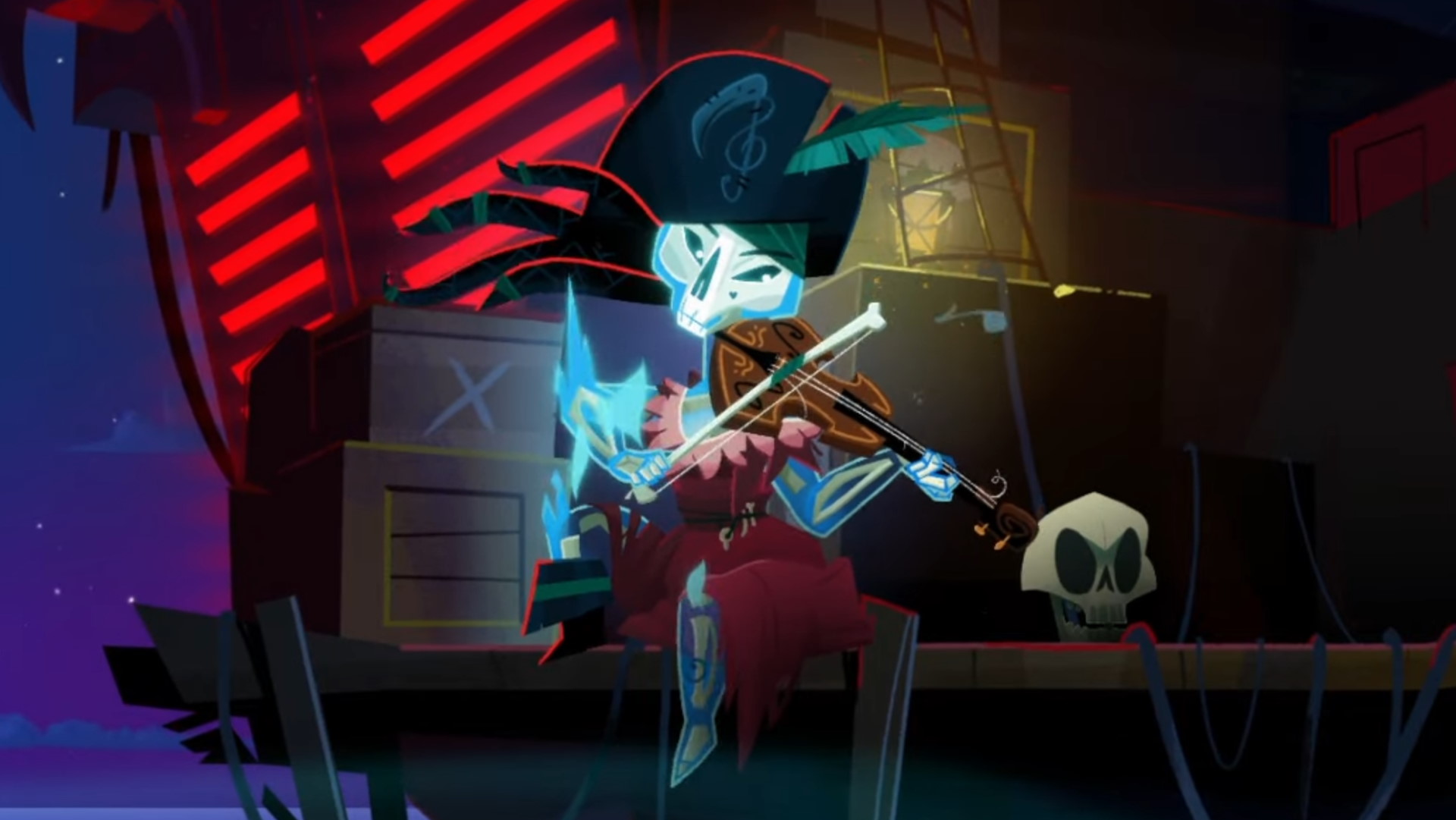The legendary Lucasarts adventure series Monkey Island returns later this year with the appropriately-named Return to Monkey Island. The announcement was a huge surprise—not least because Gilbert himself had publicly given up on ever making another—and was welcomed by many fans after a long and not-great legacy of mediocre Monkey Islands.
The game is being developed by Gilbert’s Terrible Toybox studio in collaboration with Devolver Digital and Lucasfilm Games, and since the announcement trailer Gilbert has been dealing with the reaction. And he’s pissed about it.
In a new blog post Gilbert takes off like a rocket, raining fire on those who think they have a better idea of what Monkey Island should be than he does. Part of the issue seems to be an older blog post by Gilbert titled ‘If I made another Monkey Island‘, which is nine years old and comes from a time when he thought he wouldn’t.
“[T]hese were not commandments handed down and etched in stone on a giant tablet,” writes Gilbert. “They were just random thoughts about a (then very unlikely) new Monkey Island game. None of these are promises or anything I owe anybody.”
Gilbert writes that the “totality” of his idea for another Monkey Island, in the past, was “‘Guybrush chases the demon pirate LeChuck to hell and Stan is there.’ That’s it. That’s all it was.”
Stan is not a typo for Satan, though I’m sure the game would have made great play of him in the role. Smilin’ Stan S. Stanman is a regular in the series, a slimy salesman who’s always out to make a quick buck. Gilbert makes the point that, had this game been made at Lucasfilm back in the day, by the time it was done that idea “would have been something completely different and better.”
“And that is exactly what Return to Monkey Island is.”
One of the elements that seems to have irked Gilbert especially is the contemporary re-casting of Lucasfilm games as visually retro. At the time, these were among the best-looking games on the planet, and the studio’s finest work retains its lustre because of best-in-class aesthetics.
“I have made one pixel art game in my entire career and that was Thimbleweed Park,” writes Gilbert. “Monkey Island 1 and 2 weren’t pixel art games. They were games using state-of-the-art tech and art. Monkey Island 1 was 16 color EGA and we jumped at the chance to upgrade it to 256 colors. Monkey Island 2 featured the magical wizardry of scanned art by Peter Chan and Steve Purcell and we lusted to keep pushing everything forward.
“If I had stayed and done Monkey Island 3 it wouldn’t have looked like Monkey Island 2. We would have kept pushing forward, and Day of the Tentacle is a good example of that.”
Gilbert mentions he wasn’t an especially big fan of DotT’s aesthetic (“But that was Dave [Grossman] and Tim [Schafer]’s game, not mine”), and that Curse of Monkey Island introducing a fully voiced Guybrush and painted backgrounds was completely in-keeping with a series that pushed this kind of stuff.
“When Dave [Grossman] and I first started brainstorming Return to Monkey Island we talked about pixel art, but it didn’t feel right,” writes Gilbert. “We didn’t want to make a retro game. You can’t read an article about Thimbleweed Park without it being called a ‘throwback game’. I didn’t want Return to Monkey Island to be just a throwback game, I wanted to keep moving Monkey Island forward because it’s interesting, fun, and exciting. It’s what the Monkey Island games have always done.”
Thus the aim for the game’s art style is “to be provocative, shocking, and not what everyone was expecting […] and it’s beautiful to see, play, and listen to. Return to Monkey Island may not be the art style you wanted or were expecting but it’s the art style I wanted.”
Then Gilbert’s annoyance with fans who expect Monkey Island to be a particular way bubbles to the surface. “It’s ironic that the people who don’t want me to make the game I want to make are some of the hard core Monkey Island fans. And that is what makes me sad about all the comments.
“Return to Monkey Island is an incredible rollercoaster. Get on and have some fun or stomp out of the amusement park because it’s not exactly the rollercoaster you wanted.
“I hope you’ll jump on with the rest of us.”
Return to Monkey Island was in development for two years before its announcement, and was an extremely well-kept secret over that time. Probably for the best because, as Gilbert puts it, “I don’t want the pressure of trying to make the game you want me to make.”
Look Ron: I want the game that you want to make. The designer’s frustration here is evident, and understandable: it must be maddening to be one of the key figures who made Monkey Island what it is, the pinnacle of the LucasArts adventure era, and have to deal with fossilised expectations of what a new one should be or look like.
Return to Monkey Island will follow on Monkey Island 2: LeChuck’s Revenge, and is unrelated to Telltale’s (awful) 2009 Tales of Monkey Island, the last game in the series. Gilbert’s aim is to make stuff that “excite[s] and amuse[s] me. If you let me do those things, you will love the game. That, I promise.”


